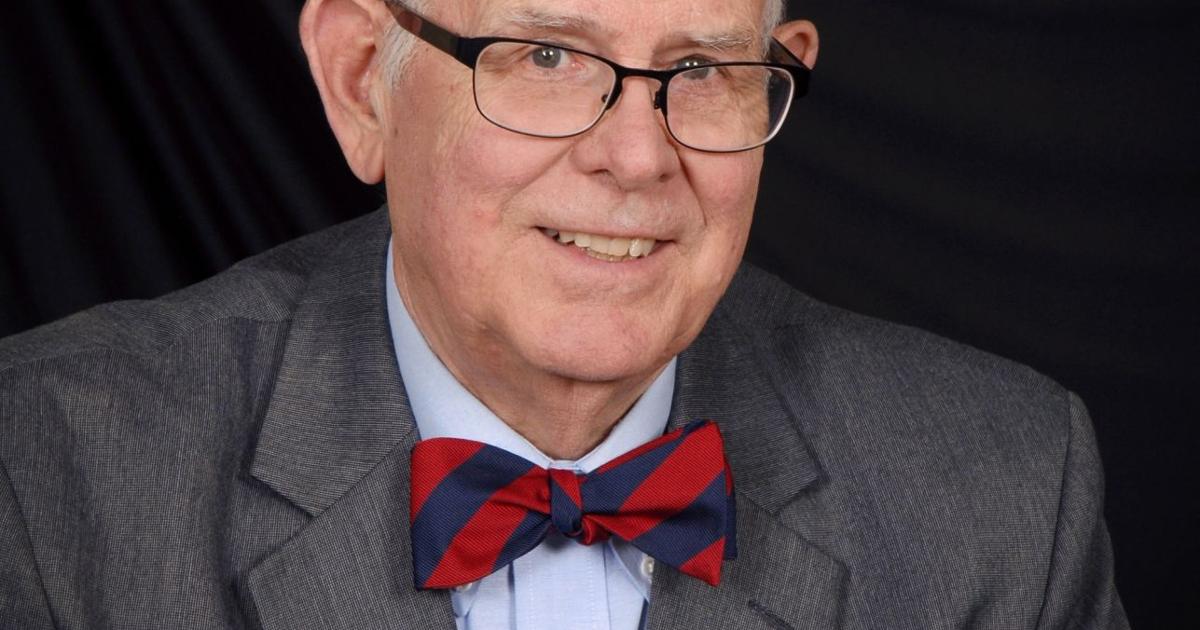
It takes a lot of chutzpah to speak to a group of doctors about health care, but I am known to venture into areas which I probably shouldn’t. The N.C. Academy of Family Physicians consists of dedicated people I greatly admire. Its members are the front door to health care.
Primary care physicians choose this specialty vital to patients’ health, but not necessarily to their own. Fewer than 1 in 4 new doctors make this their path. Those who do so value the personal relationships with patients and genuinely believe this is the best approach to improve overall health.
I began my remarks by sounding a common note, namely that health care costs are too high. With barely 4% of the world’s population, our country spends almost half of the $8 trillion world health care expenditure. In 1970, the U.S. spent 6% of its gross domestic product on health care. The federal Centers for Medicare and Medicaid Services says today that is 19.7% — 20 cents out of every dollar of economic output. The per capita cost of health care is estimated to be $11,945, more than twice as much as the average industrialized nation. And some 64% of those surveyed said they avoided or delayed medical care because of costs.
People are also reading…
Many without health insurance incur large debts. State Treasurer Dale Folwell, at a forum in New Bern, touted a proposed bill that would help working families avoid financial ruin just because a member became sick. This problem is especially acute in eastern North Carolina, the area of our state with the worst concentration of medical debt placed for collection.
The Robert Graham Center in Washington reports that North Carolina has almost 6,000 primary care physicians (2010 numbers) or about one family doctor for each 1,633 people, well above the national average of 1 to 1,463 people. Our state set a goal to get closer to the national average; however, population growth and the greying of our state make this a stretch. The Graham Center further projects that our state will need another 1,885 — a 31% increase — primary care physicians by 2030.
Of the 25% of new doctors choosing family medicine, even fewer choose to start or join practices in rural areas of our state, where people are poorer, less healthy and more dependent on Medicaid and Medicare. Patient loads are often greater, fewer support services such as pharmacies are available and physician spousal employment opportunities are fewer. Adding a family physician to a rural community provides more benefits than just lowering health care costs and improving health outcomes. It is a morale boost that can attract new businesses and residents.
The Sheps Center for Healthcare Services Research at the University of North Carolina at Chapel Hill reports that between 1990 and 2020 there were 334 documented rural hospital closures in 44 states. North Carolina witnessed 11 such closures since 2005, and at least five more are teetering. COVID-19 federal rescue funding helped slow the bleeding, but those funds have dried up and hard decisions lie ahead for rural hospitals.
It’s a gross understatement to say we need to dramatically increase the number of primary care physicians. Medical schools at East Carolina and Campbell universities and UNC are putting renewed emphasis on family medicine in rural areas by increasing the number of acceptances from students from those areas, anticipating the doctors will return home to practice. More funding for scholarships for family medicine students pledging to practice in rural areas is needed to dramatically relieve shortages.
The average graduate from medical school has spent eight years being educated and three years in residency training. It is not uncommon for the new doctor to begin practice with $200,000 or more in student debt, a staggering amount before even starting a professional life. According to salary.com the average family physician in North Carolina earns between $184,179 and $239,970 per year. One would suspect income would be higher in urban areas and lower in the more rural. That income might sound attractive to many, but after waiting so many years to enter the workforce and having to pay back $200,000 in debt, the amount doesn’t look so big.
At least two organizations in our state, Community Care North Carolina and the N.C. Academy of Family Physicians, are working together to encourage more family physicians. Community Care has been trained by the Massachusetts Institute of Technology to establish a new business mentoring program. New doctors generally know very little about business matters, and the mentoring will help them in running their practice. The mentoring also helps rural communities learn what they must do to attract and retain family physicians. Financial assistance with building or office space, student debt retirement and other support services will ensure the new doctor not only survives but thrives. The goal is for both the doctor and the community to remain happily married for many years.
Here’s my spin: We are staring down the barrel of a “code blue” health care crisis. Adding more family physicians, especially in rural communities, can go a long way toward averting the crisis. We must help family doctors in helping us.
Tom Campbell is a member of the N.C. Broadcasters Hall of Fame, a newspaper columnist and the retired creator, producer and moderator of “NC SPIN.” Email him at tomcamp@carolinabroadcasting.com.
Source link
